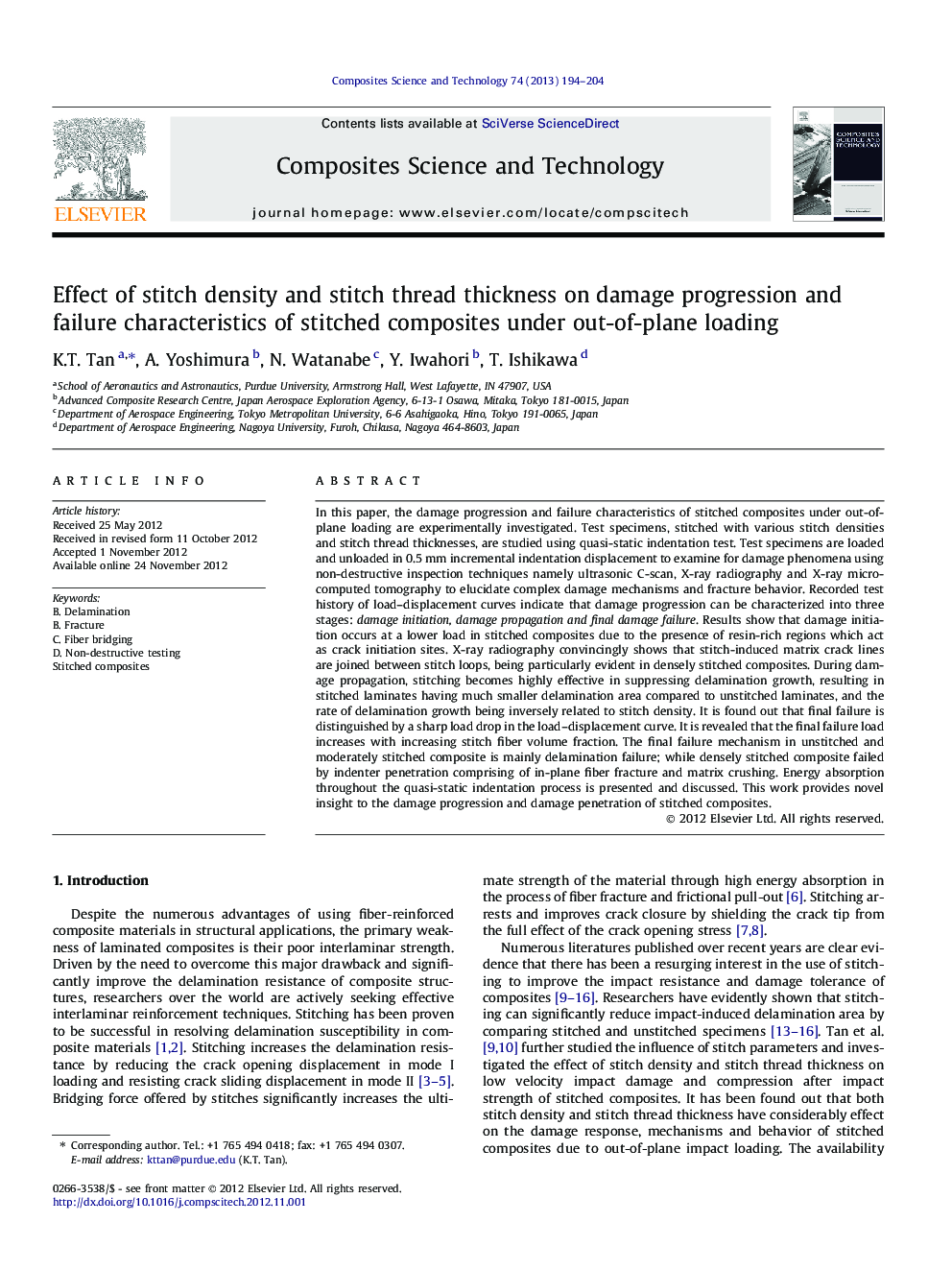| کد مقاله | کد نشریه | سال انتشار | مقاله انگلیسی | نسخه تمام متن |
|---|---|---|---|---|
| 820746 | 1469551 | 2013 | 11 صفحه PDF | دانلود رایگان |
عنوان انگلیسی مقاله ISI
Effect of stitch density and stitch thread thickness on damage progression and failure characteristics of stitched composites under out-of-plane loading
دانلود مقاله + سفارش ترجمه
دانلود مقاله ISI انگلیسی
رایگان برای ایرانیان
کلمات کلیدی
موضوعات مرتبط
مهندسی و علوم پایه
سایر رشته های مهندسی
مهندسی (عمومی)
پیش نمایش صفحه اول مقاله

چکیده انگلیسی
In this paper, the damage progression and failure characteristics of stitched composites under out-of-plane loading are experimentally investigated. Test specimens, stitched with various stitch densities and stitch thread thicknesses, are studied using quasi-static indentation test. Test specimens are loaded and unloaded in 0.5Â mm incremental indentation displacement to examine for damage phenomena using non-destructive inspection techniques namely ultrasonic C-scan, X-ray radiography and X-ray micro-computed tomography to elucidate complex damage mechanisms and fracture behavior. Recorded test history of load-displacement curves indicate that damage progression can be characterized into three stages: damage initiation, damage propagation and final damage failure. Results show that damage initiation occurs at a lower load in stitched composites due to the presence of resin-rich regions which act as crack initiation sites. X-ray radiography convincingly shows that stitch-induced matrix crack lines are joined between stitch loops, being particularly evident in densely stitched composites. During damage propagation, stitching becomes highly effective in suppressing delamination growth, resulting in stitched laminates having much smaller delamination area compared to unstitched laminates, and the rate of delamination growth being inversely related to stitch density. It is found out that final failure is distinguished by a sharp load drop in the load-displacement curve. It is revealed that the final failure load increases with increasing stitch fiber volume fraction. The final failure mechanism in unstitched and moderately stitched composite is mainly delamination failure; while densely stitched composite failed by indenter penetration comprising of in-plane fiber fracture and matrix crushing. Energy absorption throughout the quasi-static indentation process is presented and discussed. This work provides novel insight to the damage progression and damage penetration of stitched composites.
ناشر
Database: Elsevier - ScienceDirect (ساینس دایرکت)
Journal: Composites Science and Technology - Volume 74, 24 January 2013, Pages 194-204
Journal: Composites Science and Technology - Volume 74, 24 January 2013, Pages 194-204
نویسندگان
K.T. Tan, A. Yoshimura, N. Watanabe, Y. Iwahori, T. Ishikawa,